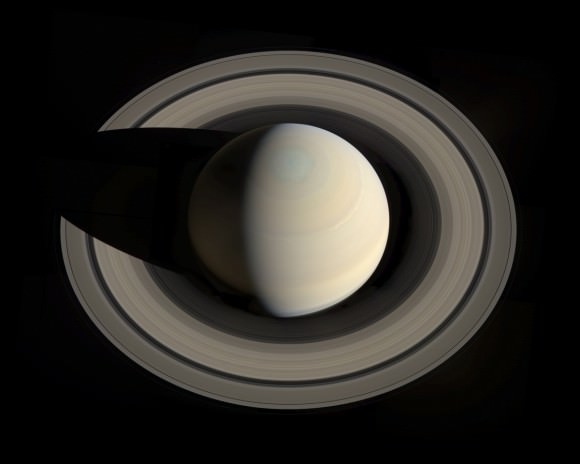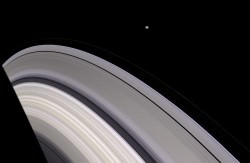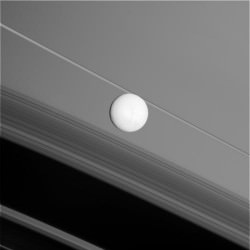Host: Fraser Cain
Guests: Emily Lakdawalla, David Dickinson, Jason Major, Brian Koberlein, Brian Wang
Continue reading “Weekly Space Hangout – January 3, 2014: Quadrantids & What’s Coming in 2014”
Moon Phases and Dates for 2014
[moon_app]
Here is the schedule for all the Moon phases for 2014. If you’re going to go skywatching, remember that the best time to see the night sky is when you have a new Moon. When there’s a full Moon, the dimmer skies are washed out. Please note that all the times listed are in Universal Time, also known as Greenwich Mean Time.
Moon Phases and Dates for 2014
Moon Phases, January 2014
New Moon – January 1, 11:14
First Quarter – January 8, 3:39
Full Moon – January 16, 4:52
Last Quarter – January 24, 5:20
New Moon – January 30, 21:38
Moon Phases, February 2014
First Quarter – February 6, 19:22
Full Moon – February 14, 23:53
Last Quarter – February 22, 17:15
Moon Phases, March 2014
New Moon – March 1, 8:00
First Quarter – March 8, 13:27
Full Moon – March 16, 17:08
Last Quarter – March 24, 1:46
New Moon – March 30, 18:45
Moon Phases, April 2014
First Quarter – April 7, 8:31
Full Moon – April 15, 7:42
Last Quarter – April 22, 7:52
New Moon – April 29, 6:14
Moon Phases, May 2014
First Quarter – May 7, 3:15
Full Moon – May 14, 19:16
Last Quarter – May 21, 12:59
New Moon – May 28, 18:40
Moon Phases, June 2014
First Quarter – June 5, 20:39
Full Moon – June 13, 4:11
Last Quarter – June 19, 18:39
New Moon – June 27, 8:08
Moon Phases, July 2014
First Quarter – July 5, 11:59
Full Moon – July 12, 11:25
Last Quarter – July 19, 2:08
New Moon – July 26, 22:42
Moon Phases, August 2014
First Quarter – August 4, 0:50
Full Moon – August 10, 18:09
Last Quarter – August 17, 12:26
New Moon – August 25, 14:13
Moon Phases, September 2014
First Quarter – September 2, 11:11
Full Moon – September 9, 1:38
Last Quarter – September 16, 2:05
New Moon – September 24, 6:14
Moon Phases, October 2014
First Quarter – October 1, 19:32
Full Moon – October 8, 10:51
Last Quarter – October 15, 19:12
New Moon – October 23, 21:57
First Quarter – October 31, 2:48
Moon Phases, November 2014
Full Moon – November 6, 22:23
Last Quarter – November 14, 15:15
New Moon – November 22, 12:32
First Quarter – November 29, 10:06
Moon Phases, December 2014
Full Moon – December 6, 12:27
Last Quarter – December 14, 12:51
New Moon – December 22, 1:36
First Quarter – December 28, 18:31
You can listen to a very interesting podcast about the formation of the Moon from Astronomy Cast, Episode 17: Where Did the Moon Come From?
Reference:
http://aa.usno.navy.mil/cgi-bin/aa_moonphases.pl?year=2013&ZZZ=END
Astronomy Cast Ep. 328: Telescope Making, Part 2: Serious Gear
Some astronomers are control freaks. It’s not enough to buy a telescope, they want to craft every part of the experience with their own hands. If you’re ready, and willing to get your hands dirty (and covered in glass dust), you can join thousands of amateur telescope makers and build your own telescope from scratch.
Continue reading “Astronomy Cast Ep. 328: Telescope Making, Part 2: Serious Gear”
Weekly Space Hangout – December 27, 2013: Year in Review & Looking Forward
Host: Fraser Cain
Guests: +Brian Koberlein (@briankoberlein), David Dickinson (@Astroguyz), Pamela Gay (@starstryder)
Big thanks to Nicole Gugliucci (@noisyastronomer) for doing a wonderful job producing this past year!
Continue reading “Weekly Space Hangout – December 27, 2013: Year in Review & Looking Forward”
When Will We Become Interstellar?
Dr. Ian O’Neill is one of the coolest scientists we know, so we sat him down at the YouTube spaces and asked him a real zinger – when will we humans become an interstellar race, like the ones we’re used to seeing on Star Trek? Here’s what he had to say to us!
Continue reading “When Will We Become Interstellar?”
Astronomy Cast Ep. 327: Telescope Making, Part 1: Toys and Kits
Why pick up a low quality, wobbly telescope from the department store when you can craft your own – just like Galileo, and all the great astronomers from history. For a minor investment, you can build a worthy telescope out of spare parts and high quality kits.
Continue reading “Astronomy Cast Ep. 327: Telescope Making, Part 1: Toys and Kits”
Weekly Space Hangout – December 20, 2013: Gaia Launch, Apollo 8 & Emergency Spacewalks
Host: Fraser Cain
Guests: Nicole Gugliucci, Jason Major, Amy Shira Teitel, David Dickinson, Elizabeth Howell
Continue reading “Weekly Space Hangout – December 20, 2013: Gaia Launch, Apollo 8 & Emergency Spacewalks”
Where Did Saturn’s Rings Come From?
Dr. Kevin Grazier was a planetary scientist with the Cassini mission for over 15 years, studying Saturn and its icy rings. He was also the science advisor for Battlestar Galactica, Eureka and the movie Gravity.
Mike Brown is a professor of planetary astronomy at Caltech. He’s best known as the man who killed Pluto, thanks to his team’s discovery of Eris and other Kuiper Belt Objects.
We recently asked them about many things – here’s what they shared with us about the rings of Saturn.
Saturn’s majestic, iconic rings define the planet, but where did they come from?
Kevin Grazier: “Saturn’s rings, good question. And the answer is different depending on which ring we’re discussing.”
That’s Dr. Kevin Grazier, a planetary scientist who worked on NASA’s Cassini mission or over 15 years, studying Saturn’s rings extensively.
Mike Brown: “Saturn’s rings – the strange things about Saturn’s rings is that they shouldn’t be there, really, in the sense that they don’t last for very long. So, if they are just left over from when Saturn was formed, they’d be gone by now. They would slowly work their way into Saturn and burn up and be gone. And yet they’re there. So they are either relatively new or somehow continuously regenerated. ‘Continuously regenerated’ seems strange and ‘relatively new’ seems also kind of strange. Something broke up – a large moon broke up, or a comet broke up – something had to have happened relatively recently. And by relatively recently, that means hundreds of millions of years ago for someone like me.”
And that’s Mike Brown, professor of planetary geology at Caltech, who studies many of the icy objects in the Solar System.

Saturn’s rings start just 7,000 km above the surface of the planet, and extend out to an altitude of 80,000 km. But they’re gossamer thin, just 10 km across at some points.
We’ve known about Saturn’s rings since 1610, when Galileo was the first person to turn a telescope on them. The resolution was primitive, and he thought he saw “handles” attached to Saturn, or perhaps what were big moons on either side.
In 1659, using a better telescope, the Dutch astronomer Christiaan Huygens figured out that these “handles” were actually rings. And finally in the 1670s, the Italian astronomer Giovanni Cassini was able to resolve the rings in more detail, even observed the biggest gap in the rings.
The Cassini mission, named after Giovanni, has been with Saturn for almost a decade, allowing us to view the rings in incredible detail. Determining the origin and evolution of Saturn’s rings has been one of its objectives.

So far, the argument continues:
Kevin Grazier: “There’s an age-old debate about whether the rings are old or new. And that goes back and forth – it’s been going back and forth for ages and it still goes back and forth. Are they old, or have they been there a long period of time? Are they new? I don’t know what to think, to be quite honest. I’m not being wishy-washy, I just don’t know what to think anymore.”
Evidence from NASA’s Voyager spacecraft indicated that the material in Saturn’s rings was young. Perhaps a comet shattered one of Saturn’s moons within the last few hundred million years, creating the rings we see today. If that was the case case, what incredible luck that we’re here to see the rings in their current form.
But when Cassini arrived, it showed evidence that Saturn’s rings are being refreshed, which could explain why they appear so young. Perhaps they are ancient after all.
Kevin Grazier: “If Saturn’s rings are old, a moon could have gotten too close to Saturn and been pulled apart by tidal stresses. There could have been a collision of moons. It could have been a pass by a nearby object, since in the early days of planetary formation, there were many objects zooming past Saturn. Saturn probably had a halo of material in it’s early days that was loosely bound to the moon.”

There is one ring that we know for certain is being refreshed…
Kevin Grazier: “The E-Ring, certainly a new ring, because the E-Ring consists of roughly micron-sized ice particles. And micron-sized ice particles don’t last in space. They sputter and sublimate – they go away in very short time periods, and we knew that. And so when we went to Saturn with Cassini, we knew to look for a source of materiel because we knew that the individual components of the E-Ring don’t last, so it has to be replenished. So the E-Ring stands alone from the established system, and the E-Ring is absolutely new.”
In 2005, scientist discovered that Saturn’s E-Ring is being constantly replenished by the moon Enceladus. Cryovolcanoes spew water ice into space from a series of fissures at its south pole.
So where did Saturn’s rings come from? We don’t know. Are the new or old? We don’t know. It just another great mystery of the Solar System.
You can follow Kevin Grazier and Mike Brown at their Google+ pages!
What Is The Big Rip?
Dr. Thad Szabo is a professor of physics and astronomy at Cerritos College. He’s also a regular contributor to many of our projects, like the Virtual Star Party and the Weekly Space Hangout. Thad has an encyclopedic knowledge of all things space, so we got him to explain a few fascinating concepts.
In this video, Thad explains the strange mystery of dark energy, and the even stranger idea of the Big Rip.
What is the ‘Big Rip?’
If we look at the expansion of the universe, at first it was thought that, as things are expanding while objects have mass, the mass is going to be attracted to other mass, and that should slow the expansion. Then, in the late 1990’s, you have the supernova surveys that are looking deeper into space than we’ve ever looked before, and measuring distances accurately to greater distances than we’ve ever seen before. Something really surprising came out, and that was what we’ll now use “dark energy” now to explain, and that is that the acceleration is not actually slowing down – it’s not even stopped. It’s actually getting faster, and if you look at the most distant objects, they’re actually moving away from us and the acceleration is increasing the acceleration of expansion. This is actually a huge result.
One of the ideas of trying to explain it is to use the “cosmological constant,” which is something that Einstein actually introduced to his field equations to try to keep the universe the same size. He didn’t like the idea of a universe changing, so he just kind of cooked up this term and threw it into the equations to say, alright, well if it isn’t supposed to expand or contract, if I make this little mathematical adjustment, it stays the same size.
Hubble comes along about ten years later, and is observing galaxies and measuring their red shifts and their distances, and says wait a minute – no the universe is expanding. And actually we should really credit that to Georges Lemaître, who was able to interpret Hubble’s data to come up with the idea of what we now call the Big Bang.
So, the expansion’s happening – wait, it’s getting faster. And now the attempt is to try to understand how dark energy works. Right now, most of the evidence points to this idea that the expansion will continue in the space between galaxies. That the forces of gravity, and especially magnetism and the strong nuclear force that holds protons and neutrons together in the center of an atom, would be strong enough that dark energy is never going to be able to pull those objects apart.
However, there’s a possibility that it doesn’t work like that. There’s actually a little bit of experimental evidence right now that, although it’s not well-established, that there’s a little bit of a bias with certain experiments that dark energy may get stronger over time. And, if it does so, the distances won’t matter – that any object will be pulled apart. So first, you will see all galaxies recede from each other, as space starts to grow bigger and bigger, faster and faster. Then the galaxies will start to be pulled apart. Then star systems, then planets from their stars, then stars themselves, and then other objects that would typically be held together by the much stronger forces, the electromagnetic force objects held by that will be pulled apart, and then eventually, nuclei in atoms.
So if dark energy behaves so that it gets stronger and stronger over time, it will eventually overcome everything, and you’ll have a universe with nothing left. That’s the ‘Big Rip’ – if dark energy gets stronger and stronger over time, it will eventually overcome any forces of attraction, and then everything is torn apart.
You can find more information from Dr. Thad Szabo at his YouTube channel.
Astronomy Cast Ep. 326: Atmospheric Dust
When you consider the hazards of spaceflight, it’s hard to get worked up about dust bunnies. And yet, atmospheric dust is going to be one of the biggest problems astronauts will face when they reach the surface of other worlds. Where does this dust come from, and what does it tell us about the history of other worlds, and what can we do to mitigate the health risks?
Continue reading “Astronomy Cast Ep. 326: Atmospheric Dust”




